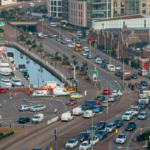Jersey, a jewel in the English Channel, is more than just a picturesque island with its stunning coastlines and rich history. It is a vibrant community with a diverse demographic landscape that paints a picture of its cultural richness and economic resilience. In this comprehensive analysis, we explore the demographics of Jersey, shedding light on its population dynamics, cultural diversity, and how it compares favourably against neighbours like the UK, France, and Guernsey.
I. Introduction: A Snapshot of Jersey’s Population
As of July 2021, Jersey’s estimated population stands at approximately 101,476, a testament to its growth and attractiveness as a place to live. Despite its compact size, the demographic diversity of Jersey offers a microcosm of a global village, with a rich blend of cultures and backgrounds that contribute to its unique social fabric.
Historical Context and Growth
Historically, Jersey has been a hub of activity and migration. Its strategic location, mild climate, and tax advantages have made it an attractive destination for settlers and immigrants over the centuries. From significant growth spurts in the 19th century linked to booming industries to modern-day financial services propelling its economy, Jersey’s population dynamics have been continually evolving.
II. Demographic Composition
Ethnic Diversity
Jersey’s population is a tapestry of ethnic groups, with the largest being natives of Jersey, forming 46.4% of the population, followed by British at 32.7%, Portuguese/Madeiran at 8.2%, and Polish at 3.3%. This ethnic mixture has enriched the island, bringing together a blend of traditions, languages, and cultural practices that enhance community life.
Linguistic Landscape
English dominates as the official language spoken by 94.5% of the population. However, the presence of Portuguese (4.6%) and other languages reflects the island’s multicultural makeup. Jersey’s traditional language, Jerriais, though spoken by fewer now, is a cherished part of the island’s heritage, symbolizing its historical links with Normandy.
Religious Affiliations
Jersey is predominantly Christian, with a variety of denominations including Anglican, Roman Catholic, and Methodist among others. This religious diversity underscores the island’s tolerant and inclusive societal values.
III. Age Distribution and Dependency
The demographic structure reveals a balanced age distribution with a median age of 37.5 years, pointing to a healthy mix of youth and elderly. This balance supports a dynamic workforce while also presenting a sustainable support structure for the elderly.
Comparison with Neighbors
When compared to larger neighbors like the UK and France, Jersey offers a more balanced demographic profile with less pronounced peaks in elderly dependency, thanks to its comprehensive healthcare and community support systems. Against Guernsey, Jersey demonstrates a more diversified demographic structure, offering a broader cultural experience and economic stability.
IV. Population Growth and Migration
Jersey has seen a steady population growth rate of 0.67% as of 2021, driven by both natural increase and net migration. The island’s ability to attract skilled labor from abroad, particularly in its thriving financial services sector, has helped maintain a healthy growth rate, higher than many regions in the UK and France.
Urbanization and Settlement
Jersey’s population is fairly evenly distributed with a significant concentration in urban areas like Saint Helier, the capital. This urban setting provides robust infrastructure and services that enhance quality of life, a contrast to more rural settings in larger countries where services might be spread thinner.
V. Economic Insights
Jersey’s economy benefits significantly from its demographic characteristics. The workforce is bolstered by immigration, particularly in sectors that require specific skills not readily available locally. This has allowed Jersey to maintain economic resilience and offer a standard of living that is competitive with, if not superior to, that of the UK and France.
VI. Quality of Life
Residents of Jersey enjoy high standards of living, excellent educational facilities, and superior healthcare services. The literacy rate and educational achievements in Jersey often surpass averages in the UK, highlighting the island’s commitment to high educational standards.
VII. Future Demographic Trends
Jersey’s government actively manages population growth to ensure sustainability. Measures to balance migration with local opportunities help maintain a stable economic environment, aiming for a controlled and sustainable demographic trend over the coming decades.
Conclusion: Jersey’s Demographic Advantage
Jersey stands out in the region for its balanced demographic profile, high standards of living, and multicultural environment. Its strategic population policies ensure that while the island community thrives, it also preserves the quality of life for future generations. Compared to its larger neighbors, Jersey offers a unique blend of community, resilience, and sustainability, making it an enviable place to live. Whether against the backdrop of the UK, France, or Guernsey, Jersey holds its own with its robust demographic and economic structure, providing a model of successful island governance.






